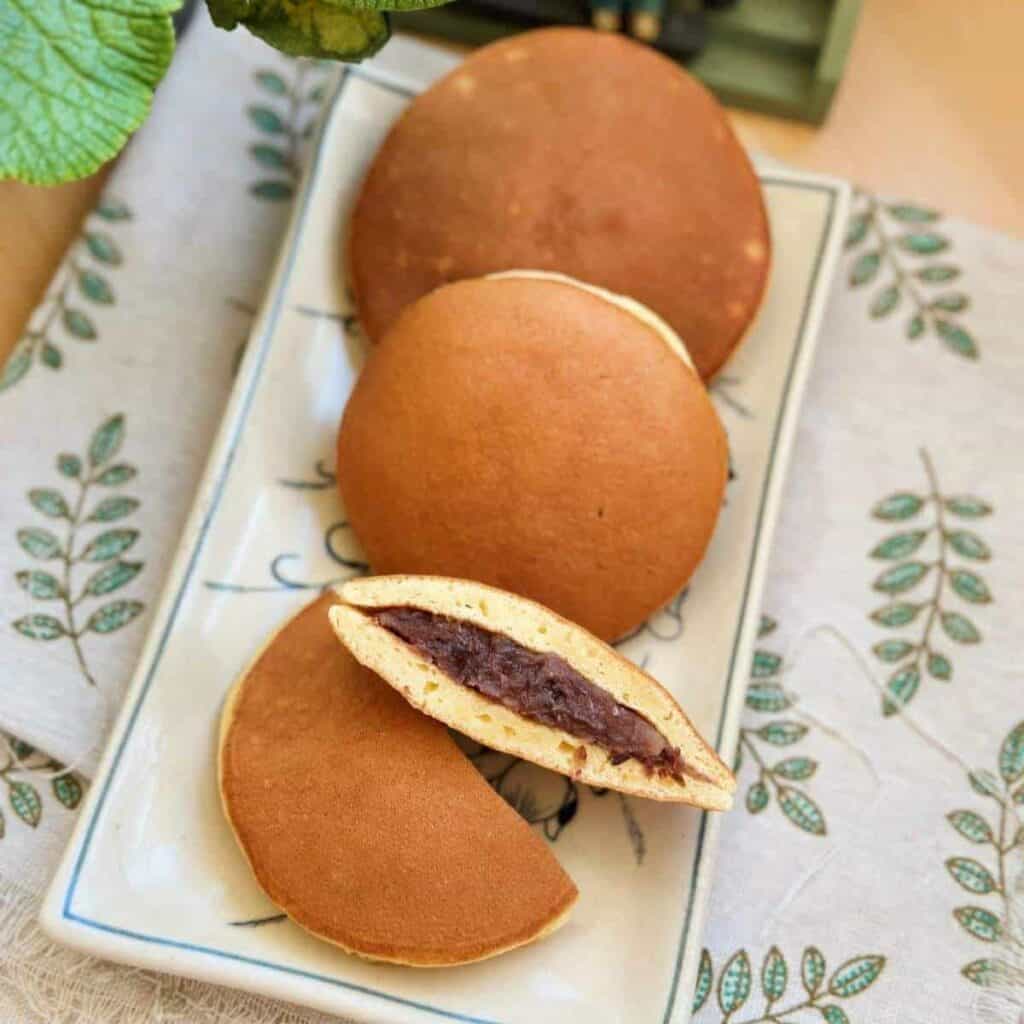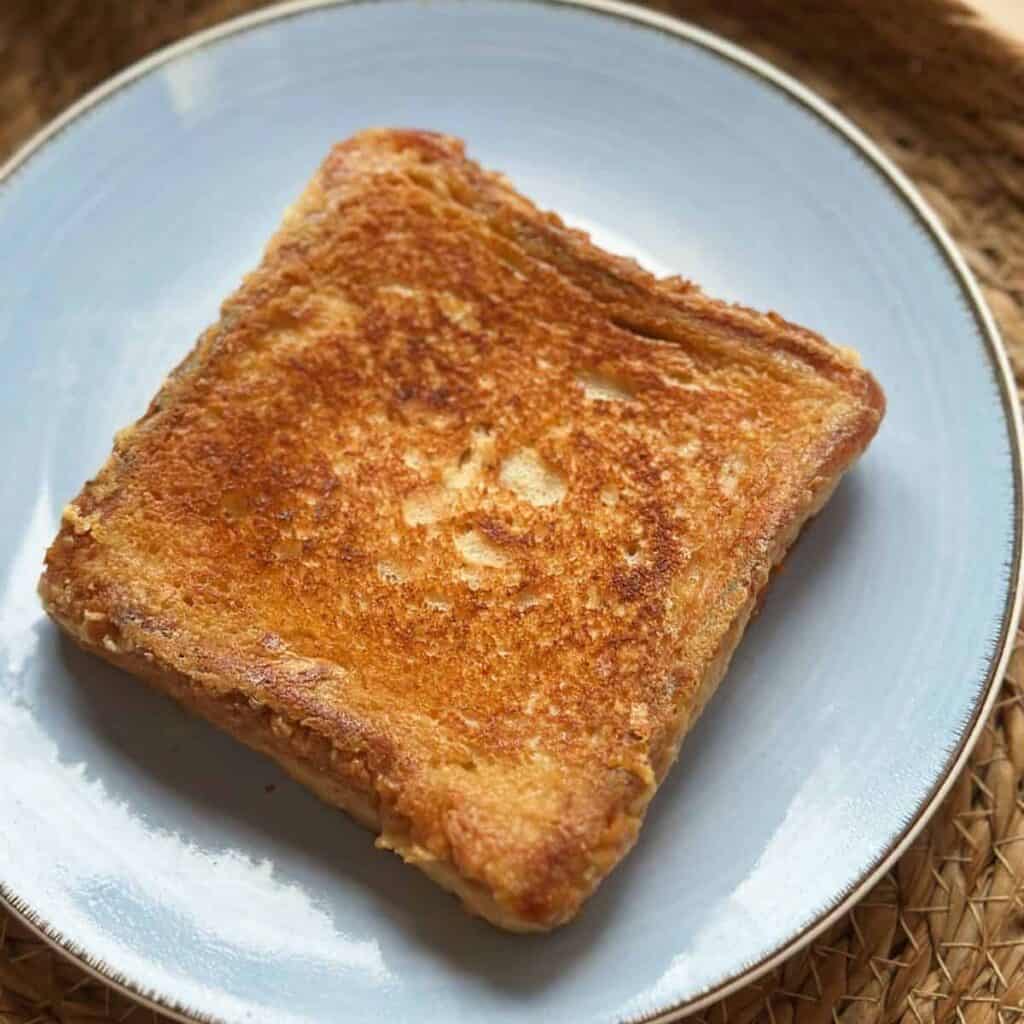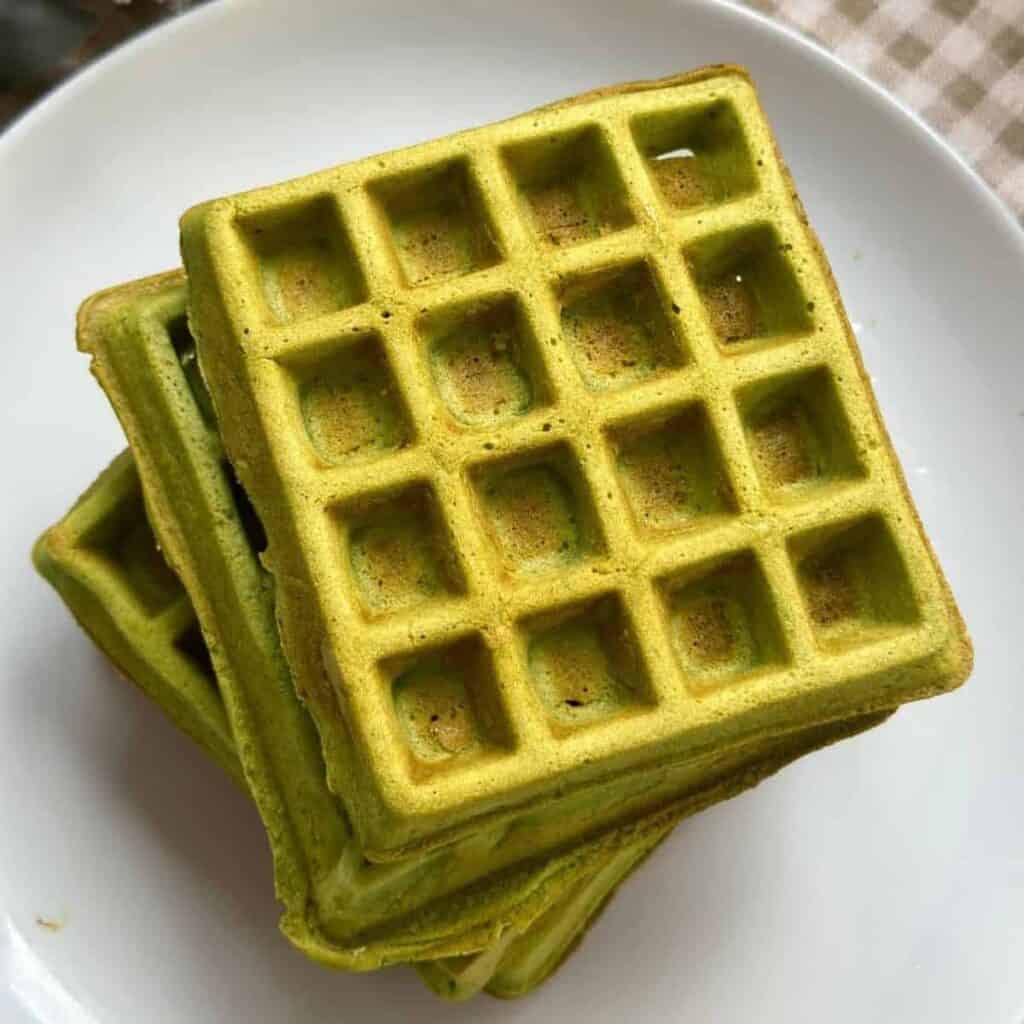Vietnamese Coconut Pandan Waffles (Bánh Kẹp Lá Dứa) boast a delightful contrast of textures: crispy on the outside, while remaining soft and chewy on the inside.
The richness of coconut milk and the sweet fragrance of Pandan (Asian vanilla) are sure to impress you.

Table of Contents
What is Pandan?

If you want to save time, feel free to scroll to the recipe card at the end to get the precise measurements 😊.
I have a deep passion for Asian-inspired desserts, whether they’re traditional or have a modern twist. Matcha, Hojicha, Ube, and Vietnamese coffee are among my favorites.
Pandan in Asian desserts is just like the counterpart of vanilla in Western desserts. It stands out with its mellow green color and sweet aroma.
Malaysia, Indonesia, and Singapore abound with pandan-infused desserts. I always enjoy Pandan Kaya (Pandan Coconut Custard Jam) for breakfast and make sure to indulge in Pandan Chiffon Cake (so soft it’s like biting into a cloud) whenever I visit Singapore.

Pandan leaves work wonders when paired with rice, elevating steamed Jasmine rice or coconut rice with just a single leaf. Thai cuisine uses pandan leaves in Khao Man Gai (a variation of Hainanese Chicken Rice), while in Vietnamese cooking, they are essential for Xôi Vò (mung bean sticky rice).
In Vietnam, pandan is known as Lá Dứa or Lá Nếp. It’s a staple ingredient in numerous desserts from the Mekong Delta. Whenever my mom prepares Chè (Vietnamese dessert soup), she always adds some pandan leaves, and her Chè Đậu Xanh (mung bean dessert soup) is simply the best.
Of course, we shouldn’t overlook the Vietnamese pandan honeycomb cake (Bánh Bò Nướng Lá Dứa) and the Vietnamese steamed pandan layer cake (Bánh Da Lợn).
Natural or Artificial Extract?
It’s always a dilemma for me.
I noticed a trend on TikTok where Filipinos often criticize recipes that use artificial Ube extract instead of Ube Halaya (Ube Jam) for ube desserts, as the extract doesn’t provide enough flavor.
I completely agree. Natural extract provides the richest flavor, though it might not yield the most vibrant color.
As a child, I always imagined taro to have a light purple hue, influenced by my favorite taro milk tea and taro ice cream, which were vividly violet. But reality hit hard—desserts made solely from taro turn out light gray with just a hint of purple, lol.
When it comes to pandan, I’m more lenient. Since pandan is mainly used for its fragrance and color rather than its flavor, artificial extract is acceptable (though sometimes its neon green color makes my dessert look like aliens if I use too much).

On lazy days when I just want to throw ingredients together for a quick sweet treat, using store-bought pandan extract is the hassle-free option.
Texture is king!!
By blending three types of flour (tapioca starch, rice flour, and all-purpose flour), these coconut pandan waffles achieve a delightful contrast in texture. They have a crispy exterior while remaining wonderfully chewy on the inside.

The center will remind you a bit of the soft, chewy texture of mochi. However, what truly sets them apart from traditional waffles is the subtle pandan flavor and the richness of coconut incorporated into the batter.
Tapioca is a starch extracted from cassava. That’s why if you enjoy these pandan waffles, you’ll surely love Vietnamese cassava cake aka Bánh Khoai Mì Nướng.
Ingredients
To make Coconut Pandan Waffles (or Bánh Kẹp Lá Dứa), you will need the following ingredients:
- Three flours: Rice flour makes a crispy outer, tapioca starch adds a delightful chewiness to the inside while all-purpose flour helps the waffles be fluffier.
- Coconut milk and pandan extract: provide the waffles with their distinctive, rich, and creamy flavor.
- Eggs, cooking oil, sugar, salt, baking powder.
Instructions
- In a large bowl, combine all the liquid ingredients (coconut milk, eggs, cooking oil, pandan extract) along with sugar and salt. You can use a whisk or a hand-mixer to mix them together until well combined.

- In a separate bowl, mix together tapioca starch, all-purpose flour, rice flour, and baking powder. Sift the dry ingredients to ensure they are well combined.
- Add the sifted dry ingredients to the wet mixture. Mix well, keeping in mind that the batter may be slightly lumpy due to the tapioca starch. Don’t worry, this is normal.

- Strain the batter to remove any remaining clumps. Cover the bowl and let the batter rest for 20-30 minutes.

- Preheat your waffle maker. Even if your waffle maker has a non-stick surface, it’s a good idea to brush some melted butter onto the waffle surface to enhance the flavor and give a nice crust to the waffles.

- Give your waffle batter a quick mix before cooking, as it may have separated a bit during the resting time. Use a ladle to pour three to four scoops of batter onto the waffle iron, adjusting the amount depending on the size of your waffle iron.

- Cook the waffles until no more steam is rising from the waffle maker, indicating that they are done.

How to serve
Bánh Kẹp Lá Dứa is my beloved childhood snack. Actually, It is already delicious on its own. However, in Vietnam, we sometimes enjoy these pandan waffles in different delightful combinations.

- One option is to pair them with pandan coconut sticky rice and shredded coconut, my favorite breakfast as a kid.
- Another choice is to make a waffle ice cream sandwich by adding a scoop of coconut ice cream between two waffles.
- Pandan Waffles, Pâté Chaud (Vietnamese meat pie), and Bánh Bao (Vietnamese steamed buns) are always my go-to for a light meal, especially when paired with my favorite Caramel Milk Tea.
How to store
- To store the Vietnamese coconut pandan waffles, place them in a resealable plastic bag or an airtight container. Store them in the freezer for up to 2 months.
- There are a few ways to reheat the waffles. One option is to warm them in a waffle maker on a low setting. Alternatively, you can use an air fryer or a toaster oven to reheat the waffles.
Tips to make the perfect waffles
- Use a digital scale instead of the cup to weigh the ingredients.
- Check your baking powder before using.
Other Asian sweet treats



Thanks a bunch for giving my recipe a shot! If you enjoyed it, I’d truly appreciate a 5-star rating or a comment to let me know your thoughts.
And don’t forget to stay in touch with me on Instagram, Facebook, Pinterest, and YouTube 🥰.

Easy Pandan Waffles (Bánh Kẹp Lá Dứa)
Equipment
- 2 Mixing bowls
- 1 Whisk
- 1 Strainer
- 1 Waffle maker
Ingredients
- 3 eggs (L size)
- 2 cup rice flour (280g)
- ½ cup all-purpose flour (75g)
- ½ cup tapioca starch (75g)
- 1 can coconut milk (400ml/14 oz)
- ⅞ cup sugar (175g)
- 1 tbsp cooking oil
- ½ tsp salt
- ½ tsp pandan extract
- 1½ tsp baking powder
Instructions
- In a large bowl, combine all the liquid ingredients—coconut milk, eggs, cooking oil, and pandan extract. Add sugar and salt. Use a whisk or hand-mixer to thoroughly mix the ingredients until well combined.
- In a separate bowl, mix together tapioca starch, all-purpose flour, rice flour, and baking powder. Sift the dry ingredients to ensure they are thoroughly blended.
- Gradually add the sifted dry ingredients to the liquid mixture, stirring well to form a smooth batter. It's normal for the batter to have a slightly lumpy texture due to the tapioca starch.
- To remove any remaining clumps by straining the batter. Cover the bowl and let the batter rest for 20-30 minutes, allowing it to develop its flavors.
- Preheat your waffle maker. To enhance the flavor and create a nice crust, you could brush some melted butter onto the waffle surface.
- Before cooking, give the waffle batter a quick mix as it may have separated slightly during the resting time. Use a ladle to pour three to four scoops of batter onto the waffle iron, adjusting the amount based on the size of your waffle iron.
- Cook the waffles until no more steam is rising from the waffle maker, which means the waffles are fully cooked.
Notes
How to make the perfect waffles:
- Use a digital scale instead of the cup to weigh the ingredients accurately.
- Check your baking powder before making the waffles.




I really wanted to make this but how many eggs do I use? 😮
Oh sorry, my bad :(. You will need 3 eggs (L size) for this recipe.
Happy cooking 🙂 !
[…] Vietnamese Coconut Pandan Waffles (Bánh Kẹp Lá Dứa) boast a delightful contrast of textures, tastes, and colors! The richness of coconut milk and the sweet fragrance of Pandan (Asian vanilla) are sure to impress your family or Sunday brunch guests! […]
Delicious! Do you really use 280g rice flour?
And 75g Tapioca starch?
Or the other way around?
Since this recipe doesn’t require precise measuring, I use a cup to measure rice flour and tapioca starch. You could also weigh them and adjust the amount of rice flour to achieve the desired consistency :).
Can the mix be made a couple days in advance? can we store mix in fridge?
Yes, you can mix all the ingredients in advance (leaving out the baking powder) and keep the mixture in the fridge for up to 7 days. Just incorporate the baking powder before you start baking